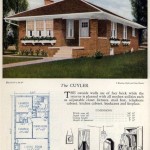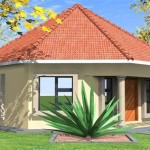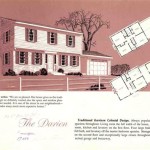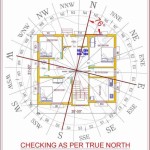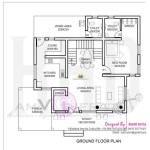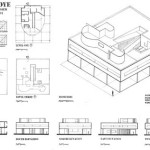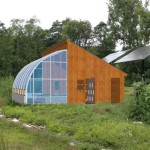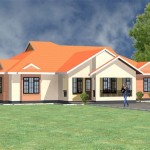Leed Platinum House Plans: Designing for Sustainability
LEED (Leadership in Energy and Environmental Design) Platinum certification represents the highest level of achievement in green building practices. Homes designed with LEED Platinum certification in mind incorporate a range of sustainable features that minimize environmental impact and promote occupant well-being. Choosing LEED Platinum house plans provides a framework for constructing a home that prioritizes energy efficiency, water conservation, resource management, and indoor environmental quality.
One of the core components of LEED Platinum house plans is energy efficiency. These plans often integrate passive solar design principles, optimizing the building's orientation and window placement to maximize natural light and minimize heat gain during summer months and heat loss in winter. High-performance insulation, airtight construction, and energy-efficient windows and doors further reduce the need for artificial heating and cooling.
Renewable energy sources are also a significant consideration in LEED Platinum house plans. The incorporation of solar photovoltaic (PV) panels is common, allowing homeowners to generate their own electricity and potentially offset their energy consumption. Solar thermal systems can be used for water heating, further reducing reliance on conventional energy sources. Geothermal heat pumps, which utilize the stable temperature of the earth, can also be integrated to provide highly efficient heating and cooling.
Water conservation is another key element of LEED Platinum house plans. Low-flow fixtures, such as toilets, showerheads, and faucets, are typically specified to reduce water usage. Dual-flush toilets offer further water savings by providing separate flush options for liquid and solid waste. Rainwater harvesting systems can be incorporated to collect and store rainwater for irrigation, reducing reliance on municipal water supplies.
Sustainable material selection plays a crucial role in LEED Platinum house plans. Locally sourced materials are preferred to reduce transportation emissions and support regional economies. Recycled and reclaimed materials, such as reclaimed wood flooring or recycled-content countertops, can be incorporated to minimize the environmental impact of manufacturing new materials. Low-VOC (volatile organic compound) paints, adhesives, and sealants are specified to improve indoor air quality.
Indoor environmental quality is a primary focus of LEED Platinum house plans. Proper ventilation systems are designed to ensure adequate fresh air circulation and remove pollutants. Natural daylighting is maximized to reduce the need for artificial lighting and improve occupant well-being. The use of low-VOC materials minimizes the emission of harmful chemicals into the indoor environment. Radon mitigation systems are often incorporated to protect occupants from exposure to this naturally occurring radioactive gas.
The site selection process is also integral to LEED Platinum house plans. Minimizing site disturbance is a key consideration, preserving existing vegetation and minimizing grading and excavation. Protecting natural habitats and minimizing impervious surfaces, such as paved areas, helps to reduce stormwater runoff and protect water quality. Choosing a site with access to public transportation can further reduce reliance on personal vehicles.
Waste management is another important aspect of LEED Platinum house plans. Construction waste management plans are developed to divert waste from landfills through recycling and reuse. The incorporation of composting systems allows for the decomposition of organic waste, reducing the amount of material sent to landfills.
Working with experienced professionals is crucial for successful implementation of LEED Platinum house plans. Architects, engineers, and contractors specializing in sustainable building practices can provide the expertise necessary to navigate the complexities of LEED certification. They can assist with integrating sustainable design principles, selecting appropriate materials, and ensuring compliance with LEED requirements.
The cost of constructing a LEED Platinum home can be higher than a conventionally built home due to the advanced technologies and materials involved. However, the long-term benefits of reduced energy and water bills, improved indoor air quality, and increased home value can offset these initial costs. Various incentives, such as tax credits and rebates, are often available to help offset the cost of implementing sustainable features.
LEED Platinum house plans provide a roadmap for building a home that is environmentally responsible and promotes healthy living. By prioritizing energy efficiency, water conservation, resource management, and indoor environmental quality, these plans contribute to a more sustainable future.
Choosing LEED Platinum house plans is an investment in both the environment and the well-being of occupants. These homes represent a commitment to sustainable living and provide a model for future generations.

Beachaus I Leed Platinum Prefab House By Pb Elemental Homes Plans Floor

10 000 Leed Certified Homes Archdaily

Leed Platinum Home Centered On Three Living Pavilions

Platinum Level Leed Home With Pool House

Leed Platinum House With A Brilliant Modernist Design

Leed V4 Platinum Home Design How We Built The Edelweiss S 1st Ecohome

Leed Platinum House With A Brilliant Modernist Design

Environmentally Friendly Architecture Recycled Home Project

Leed Platinum House In A Warm Climate Greenbuildingadvisor

Leed V4 Platinum Home Design How We Built The Edelweiss S 1st Ecohome

